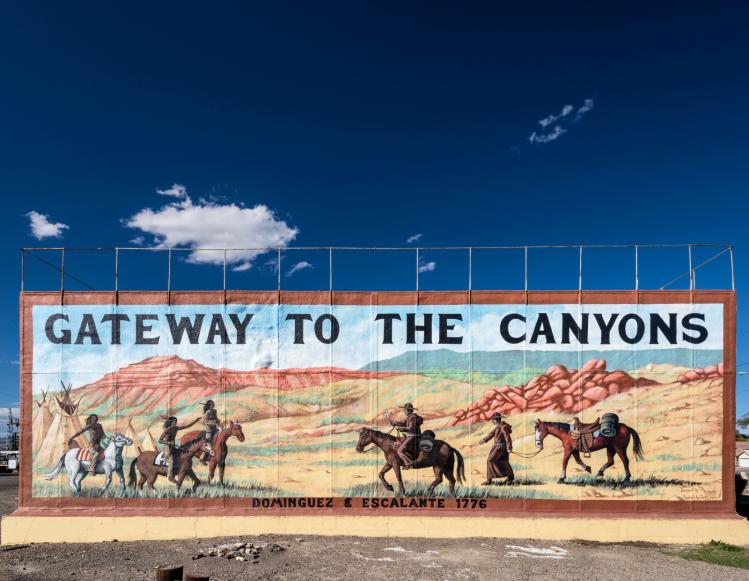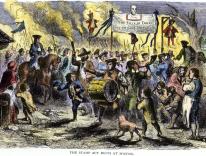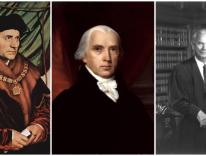
Almost a hundred years ago, the eminent historian Herbert Bolton complained that standard narratives of U.S. history left out the Spanish story almost entirely. Every schoolchild knew about Lewis and Clark; few if any, even in the schoolhouses of the West, knew of the equally, if not more, impressive expeditions and explorations of Junípero Serra, Juan Bautista de Anza, or Francisco Garcés. Furthermore, what little was taught about the entradas of the Spanish pioneers was inevitably colored by the Black Legend of their depredations and iniquity—a legend popular in the Protestant English-speaking world for centuries.
Bolton’s response to this state of affairs was to undertake one of the most impressive scholarly projects in American intellectual history. In dusty, often disorganized archives scattered throughout Spain, Mexico, and elsewhere, he uncovered long-forgotten, never-translated manuscripts. Among them were documents related to Coronado’s conquest of New Mexico; the memoirs of the great Jesuit Eusebio Kino, charismatic missionary to the peoples of Baja California and New Spain’s northern frontier; the reports filed by Anza, Father Garcés, and others about the trails they had blazed into California and the unmapped wilderness north of Sonora; and the diary of Fr. Garcés’s Franciscan contemporary, Fray Silvestre Vélez de Escalante, which tells the story of the nine-month journey he and his companions made from Santa Fe into today’s Colorado, Utah, and Arizona.
Bolton was no armchair historian. He retraced the paths of each of these explorers, often on horseback and under difficult conditions, the better to see the terrain through their eyes and to understand and more truthfully tell their stories. His 1951 book on the Escalante expedition draws on such firsthand knowledge. It is one of very few books devoted to this remarkable journey.
Enter David Roberts, journalist and author of two dozen books of exploration and Southwestern history. His Escalante’s Dream: On the Trail of the Spanish Discovery of the Southwest offers a contemporary reinterpretation of the Escalante expedition. In 2017 Roberts and his wife retraced the expedition’s winding path through the arid, still largely unpopulated intermountain West. It is an interesting book, but it ultimately reveals much more about Roberts and the prejudices of our time than it does about Fray Escalante and his companions.
The expedition for which Fr. Escalante served as a diarist left Santa Fe on July 29, 1776. It was headed by Escalante’s Franciscan colleague Francisco Atanasio Domínguez and included just eight other men. The goal was to find a more direct path to the new Spanish settlement in Monterey than the only one then available—a route that led southward along the Rio Grande to El Paso and fairly deep into Mexico before swinging northwest through Sonora, crossing the Colorado River at what is now Yuma, Arizona, bearing west until reaching the recently founded mission of San Gabriel (east of today’s Los Angeles), and finally heading north more or less along the coast to Monterey. It was a goal that Escalante and Domínguez insisted must be accomplished peacefully. Despite the frequent presence of marauding Apache and Comanche warriors in the lands surrounding Santa Fe, no soldiers marched from the capital in their company, and no one in their group was supposed to trade with whatever Indians they encountered. Escalante and Domínguez wanted the natives to know they had only one purpose: to inform them of the Gospel and to extend its earthly reign—a reign protected and promoted by King Carlos III.
With respect to its main goal the expedition was spectacularly unsuccessful. Although they had established Santa Fe almost two centuries earlier, the Spaniards knew very little about the area north and west of that remote outpost. Monterey was much farther away than they thought, and the high, canyon-gashed, mostly dry country of contemporary Utah and Colorado was nearly unnavigable. The company got as far as contemporary Cedar City, Utah, before giving up its quest. The return trip, which forced the men, nearing starvation, to cross the as-yet-unnamed Grand Canyon and ford the Colorado River, was incredibly arduous. But all members of the party survived.
Cedar City is less than halfway to Monterey. Yet the expedition succeeded in ways perhaps dearer to the friars’ hearts. Virtually every notable feature of the landscape through which they passed was now named after a saint. They had preached the Gospel to a number of new tribes. And they had successfully scouted out sites for potential missions. Most importantly, the venture had been peaceful, steering clear of any violent encounters.
That was no small achievement, for by 1776 the New World’s native peoples had suffered for more than a quarter millennium from Spanish violence—violence that had led to the extermination of entire tribes, violence frequently deemed to be unnecessary and excessive even by contemporary observers. In New Mexico no less than elsewhere, the price of resistance to Spanish colonialism could be high—as in 1541, when Coronado slaughtered more than a hundred Tiguex Indians whom he had convened under a flag of peace. During that atrocity, Franciscans had looked on and said little. During others, they did much worse. In 1656 a sadistic priest murdered three Hopi men who resented and threatened to expose his sexual sins. He was soon exonerated and made custodian of the entire province.
Fortunately, Domínguez and Escalante left no such legacy, precisely because their endeavor was more firmly rooted in their theological commitments. An author wishing to reconsider their journey today might therefore be expected to know something not just about the legacy of Spanish cruelty in the New World, but also about Christianity itself. But reading Escalante’s Dream is like reading a biography of Mozart by a writer who is fascinated by Viennese street patterns and folkways but hates and knows little about music. As Roberts admits to his wife midway through their journey, “I don’t believe at all in the padres’ cause. Converting the savages. Cramming Jesus and the Gospel down the throats of polytheistic Indians.” The only excuse for such inexcusable behavior is that “in 1776, cultural relativism hadn’t yet been invented.” Dark times indeed.
Roberts seems generally unconcerned about the limitations his lack of sympathy for, and knowledge of, his principal subjects’ worldview might place on his understanding of their expedition. He avails himself of the expertise of Southwestern historians and Harvard archeologists to illuminate his subject, but he never thinks to turn to a Christian theologian for insight into the missionaries’ motivation. His bibliography does not contain a single book written from an explicitly Christian viewpoint.
Ultimately, Roberts comes to respect the expeditionists’ bravery. But if he thinks Christian missionaries ever could have had anything of value to offer the Pueblo, Paiute, Hopi, and other Indians encountered by Escalante’s group during their expedition, he never admits it. He also cautions us not to place much stock in Escalante’s accounts of natives occasionally listening patiently, even happily, to the friars’ preaching. How far we have come from Bolton, the Methodist scholar who believed that, despite the atrocities committed by the Spanish Empire, the diseases it unwittingly introduced, and the instability it fomented, the civilization—including the religion—the Spanish carried with them were nevertheless positive aspects of our collective inheritance.
Needless to say, that opinion is now out of fashion. Some would reduce the entire Spanish legacy in the Americas to nothing more than genocide. Roberts doesn’t go that far, but he would presumably assent to the now-conventional view that the Spanish—soldiers, friars, and settlers alike—are best understood as brutal, power-hungry, fanatical, and corrupt. The Black Legend is alive and well.
The irony is that no pre-Christian Indian would or could judge the Spaniards in the same ways Roberts and many other contemporary historians do. Indians in the Southwest may have considered the Spaniards implacable enemies for any number of justifiable reasons—including their lust for gold, their slave-taking, and their expropriation of land on which the Indians had lived—but the Indians would not have accused the Spanish of violating their human rights or committing war crimes, for these concepts are part of our Christian heritage. Some native peoples would likely have seen the Spaniards as great warriors who possessed unique influence over cosmic forces, perhaps sent by the gods as punishments for their own or their enemies’ misdeeds. And what the Spanish did to the Indians, warring tribes had long been doing to each other. Neither war nor genocide were introduced to the New World by the Spanish.
America’s Spanish heritage is a complicated one, and the Jesuits, Franciscans, and Dominicans who participated in the conquest and colonization of the Southwest have things to answer for. But we cannot adequately evaluate their legacy if we do not at least try to escape the imaginative restrictions, scholarly biases, and moral self-satisfaction of our own time.
Escalante’s Dream
On the Trail of the Spanish Discovery of the Southwest
David Roberts
W. W. Norton
$26.95 | 360 pp.
Please email comments to [email protected] and join the conversation on our Facebook page.
Previous Story
Poem | The Time that's in It
Next Story
Letters | Responses to Pascal & the Magisterium


